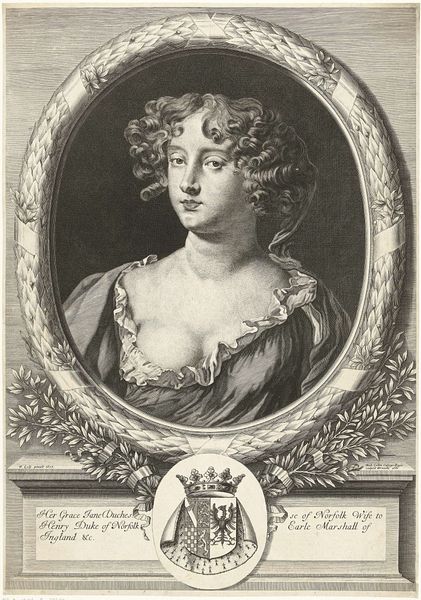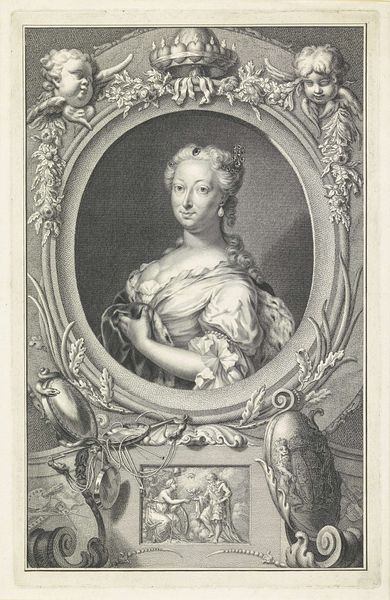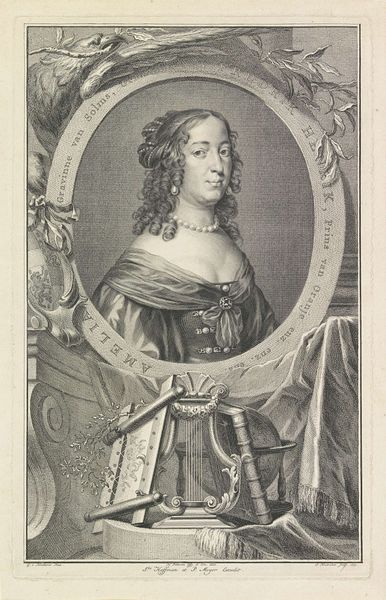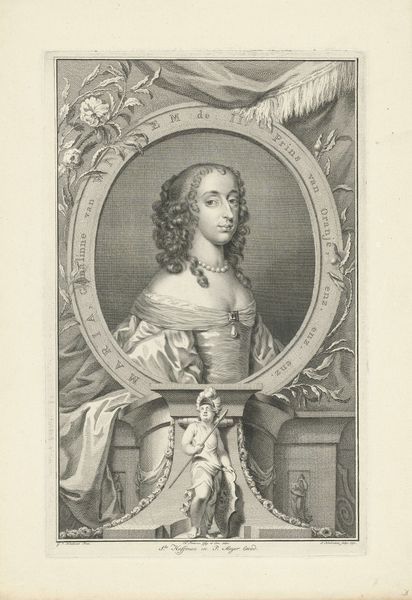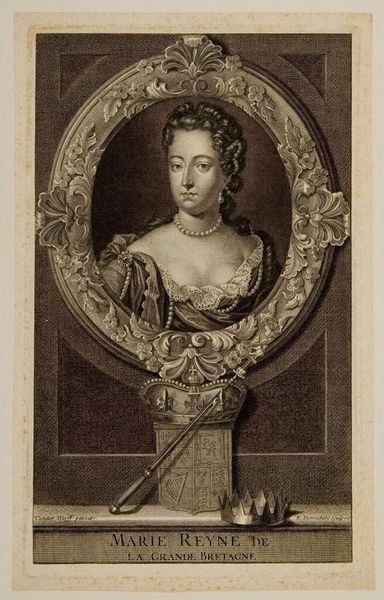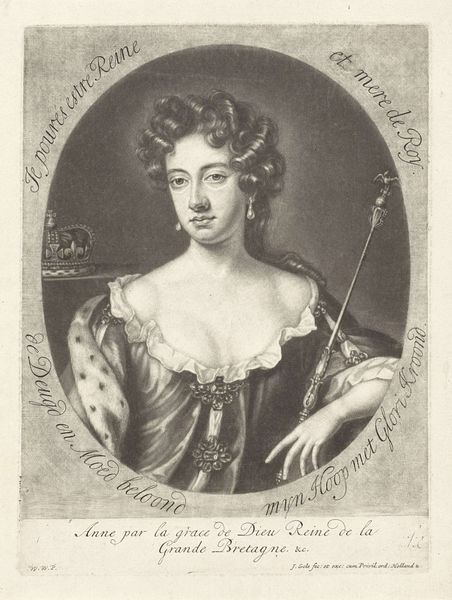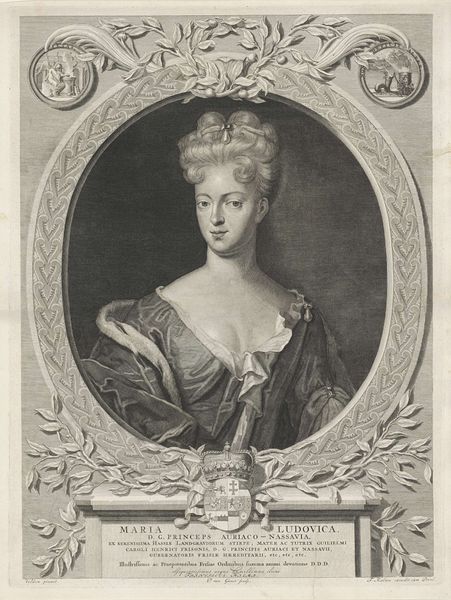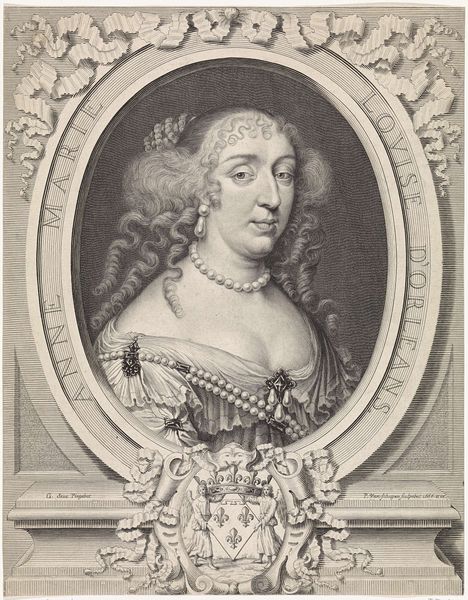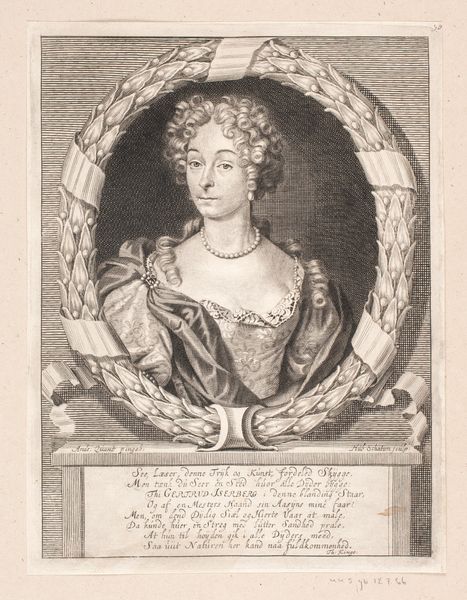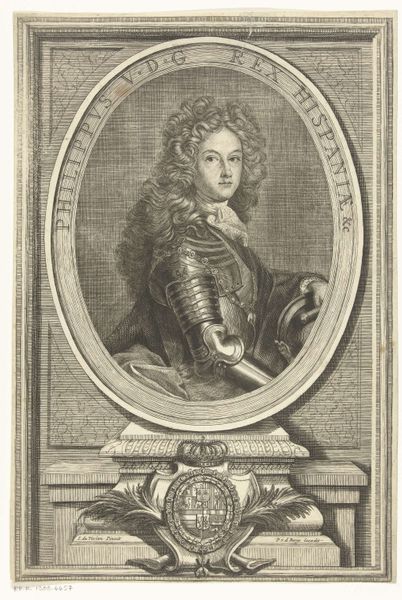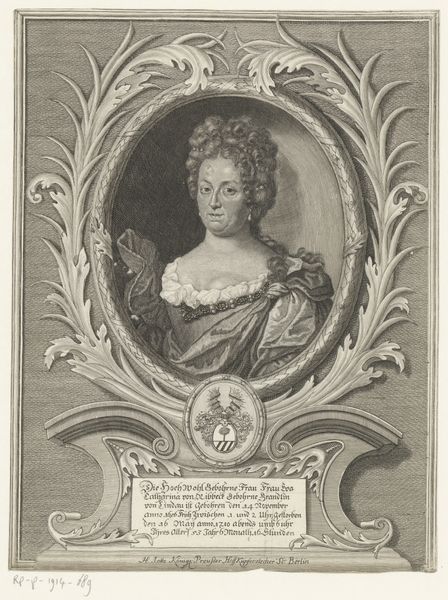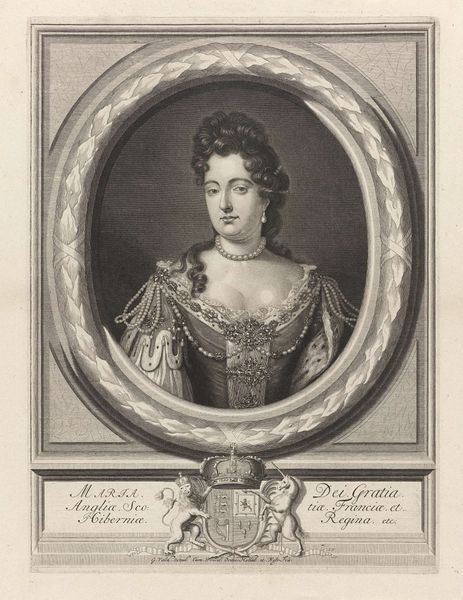
drawing, print, metal, engraving
#
portrait
#
drawing
#
baroque
# print
#
metal
#
engraving
Dimensions: height 362 mm, width 232 mm
Copyright: Rijks Museum: Open Domain
Editor: Here we have Jacob Houbraken's "Portrait of Maria II Stuart" from around 1750. It's a print, an engraving, I believe. I'm struck by how ornate it is, the frame around the portrait itself and then the additional decorative elements. What should we make of this piece? Curator: Let's consider the material processes at play. This is an engraving, a reproductive technology dependent on skilled labor, metal plates, and printing presses. Notice the textures Houbraken creates through varying the density of lines. Editor: Yes, the details are remarkable. It's like a photograph but rendered entirely through these tiny, precise marks. What does that labor signify? Curator: This level of craftsmanship speaks to the value placed on representing Maria II. But think also of the audience: prints democratized imagery, making royal portraits accessible beyond court circles. Look at the crown depicted below, emphasizing both the status of the subject but also, considering its position on the bottom part, perhaps also alluding to the instability of power or royalty during the Baroque. Editor: So, the material process influences how widely her image circulated and, therefore, who had access to the idea of monarchy. Curator: Precisely. And think about the materials themselves: the ink, the paper. These would have been sourced, traded, consumed. The portrait itself becomes an object within a network of economic activity. The print translates labor into material. What do you think that communicates? Editor: I guess it makes me reconsider the power dynamics embedded within the image, not just in terms of the subject, Maria, but the hands involved in creating it, distributing it, consuming it. It’s not just about celebrating royalty, but also about celebrating a specific class of craftsmanship. Curator: Exactly. By focusing on production and material, we gain a richer understanding of the artwork’s meaning within its historical context. Editor: I never thought about prints in such a material way, I was always more concerned with their visual language. That really reframes my understanding.
Comments
No comments
Be the first to comment and join the conversation on the ultimate creative platform.
